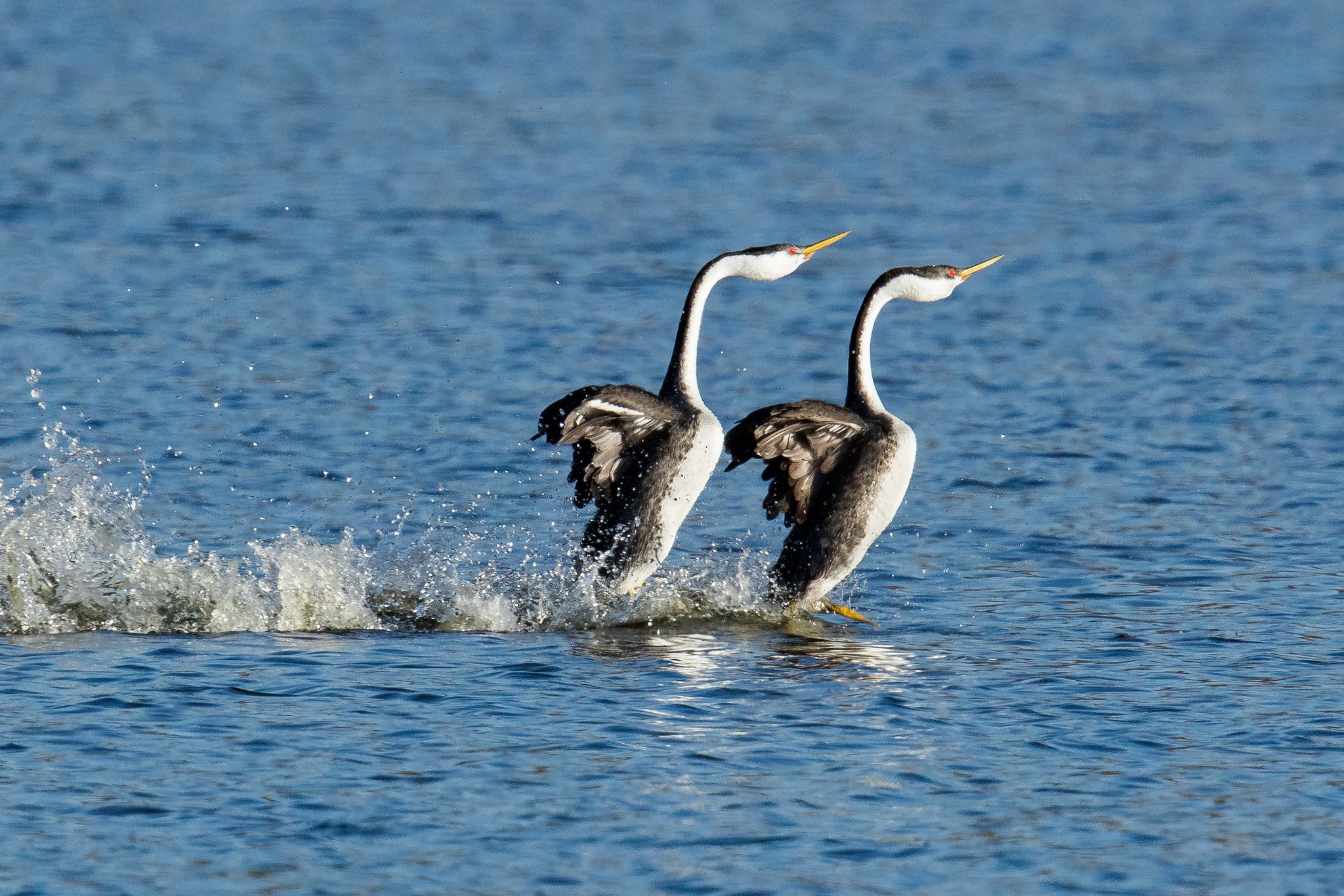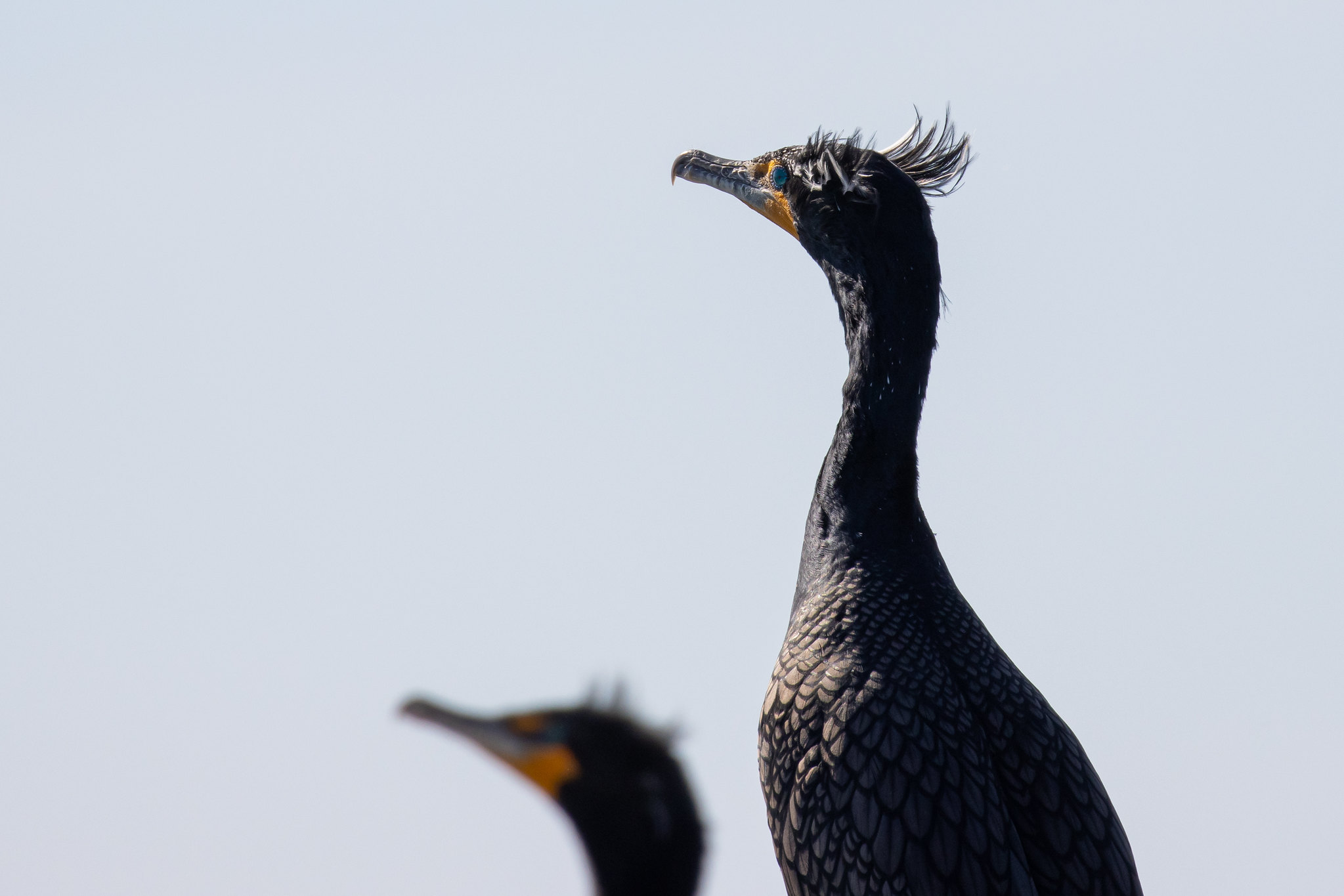
What does Valentine’s Day have to do with birds?
Apparently, a lot! As the story goes, Valentine’s Day dates back to medieval times when birdwatchers in France noticed many birds began mating around mid-February. They decided to designate a specific day—February 14th—to celebrate the beginning of the mating season.
Whether or not this is the true origin of the holiday, birds are experts when it comes to flashy and unique mating displays, plumage, and courtship behaviors. Here are some of our favorites to celebrate our love of birds.
Western Grebe
The Western Grebe is a waterbird that thrives on the lakes and coasts of western North America. This species is known for two dynamic displays during courtship: the rushing ceremony and the weed ceremony.
The rushing ceremony begins with one bird mirroring the other's movements, bowing and twisting their necks. Then fully in sync, the birds rise gracefully out of the water, side by side, and run across the surface with their wings held back and high and necks curved. The ceremony ends with a quick, smooth dive into the water.
The weed ceremony, another complex and beautiful display, occurs between a mated pair during nesting. In this dance, the birds stretch their necks, dive underwater, and bob their heads before engaging in “weed-dancing.” This astonishing display involves the pair facing each other with vegetation in their bills, rising vertically out of the water with their necks fully extended and bills to the sky, as they spiral around each other.
Double-crested Cormorant
Commonly seen around fresh and saltwater habitats, along docks, piers, and marinas, this bird also has a unique approach to attracting a mate. Males will select an ideal nest site before even approaching a female. Once they find the perfect spot, they stand on it with their breast down, bill and tail up, wings outstretched, flaring the fluffy crests on the side of their heads. These tufted crests are the source of this species’ name but are only present during the breeding season. When a female approaches, the male will greet her by opening his mouth to show the bright blue interior in another attempt to woo her.

Ruddy Duck
During breeding season, the Ruddy Duck is anything but boring with a striking blue bill, black head, white cheek, and stiff tail. To attract a mate, the males perform a “bubble display”. In this ritual, the males will strike their bills against their puffed chests and necks, creating a mass of bubbles as the air escapes their feathers.
Pectoral Sandpiper
Pectoral Sandpipers are medium-sized shorebirds commonly found along the eastern parts of North America and who breed on Alaska’s Arctic tundra. It's there where they put on an incredible display to attract their mates. Males slowly approach a female while swaying back and forth with their wings dropped, tail high, and breast feathers fully fluffed. They then inflate and deflate the air sac in their breast to create a low-pitched sound and stretch out their necks while raising and waving their wings – almost as if they’re saying, “Hey, look over here!”.
Love is for the birds
Of course, these are just a select few of the many, many, incredible courtship behaviors and displays that birds use to woo their mates.
Love is certainly in the air—and in the water - and we are loving it!!
